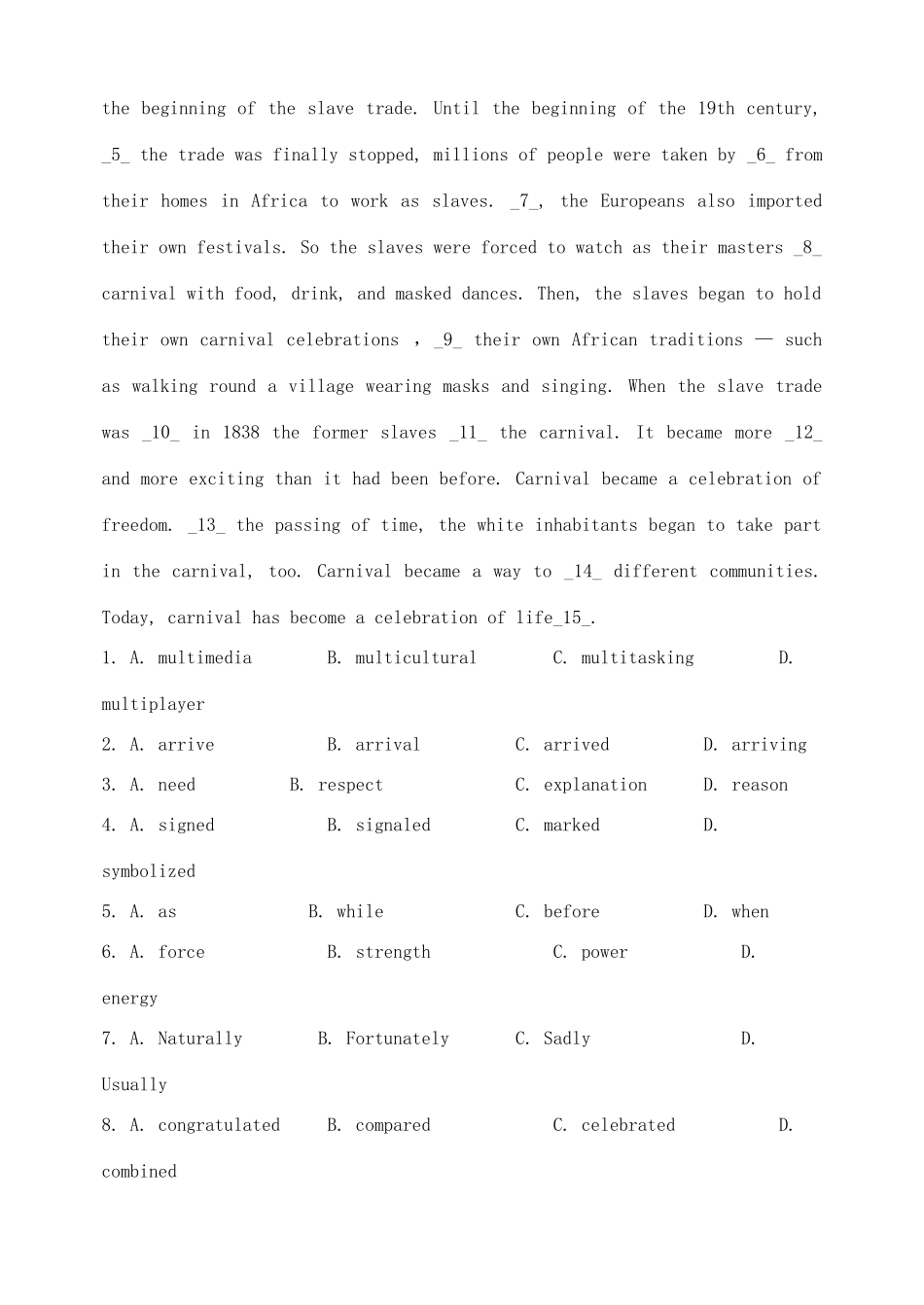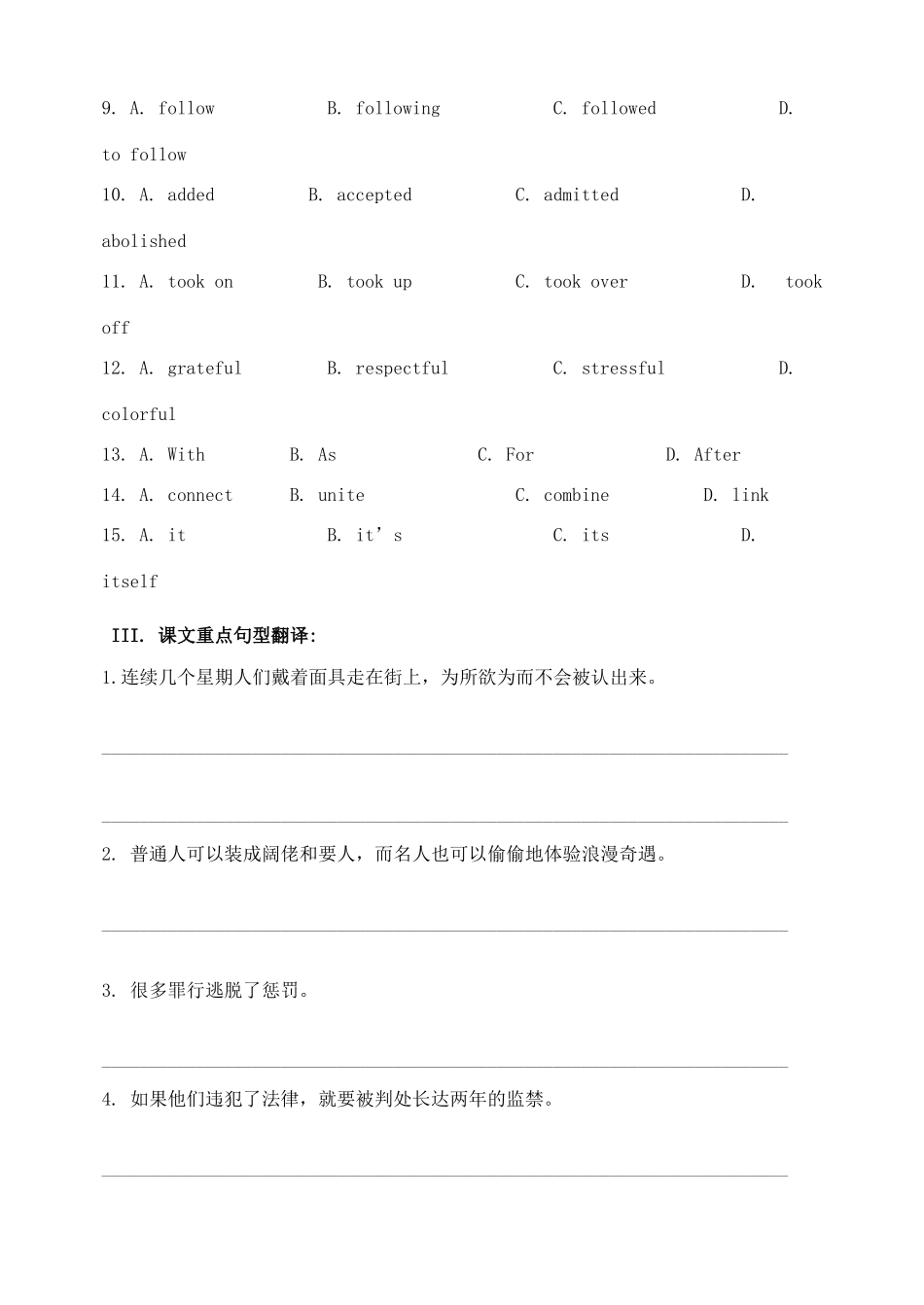Module4 Carnival话题狂欢节在历史中的演变和发展。了解国内外的传统节日并学习狂欢节在外国文化中的历史地位。重点知识pretend; book (v.); mark; trade; think of; the passive voice 阅读导学案使用方法:自主阅读 P32-33 课文,然后尝试完成下面的练习。作完后,自行查阅教材进行答案校对。Ⅰ. 语法填空Carnival is always connected 1._______ crowd,costumes,and confusion. “Carnival” is 2._____ Latin word,3._____________ (mean) “no more meat”. At the beginning, people would like to have fun at the end of winter season. For weeks 4._____ end people walked around the streets wearing masks. Wearing masks turned out to be problem. Their use 5.__________ (limit) by laws. 6._____ in the late 1970s the tradition was revived by students. 7._______ began making masks and organizing parties. Today, carnival in Venice is celebrated for five days in February. At the carnival you see thousands of masks---elegant or 8. _______________ (fright), sad or amusing, traditional or modern—but you have no idea what the faces 9.__________ them look like. If the masks come off, the magic 10.__________(lose).II. 完型填空Carnival today is an international, _1_ experience. To understand what carnival is all about, we need to look at the history of America. The _2_ of Europeans in America, and the opening of huge farms and plantations to grow cotton meant there was an immediate _3_ for people to work on them. This _4_ the beginning of the slave trade. Until the beginning of the 19th century, _5_ the trade was finally stopped, millions of people were taken by _6_ from their homes in Africa to work as slaves. _7_, the Europeans also imported their own festivals. So the slaves were forced to watch as their masters _8_ carnival with food, drink, and masked dances...


